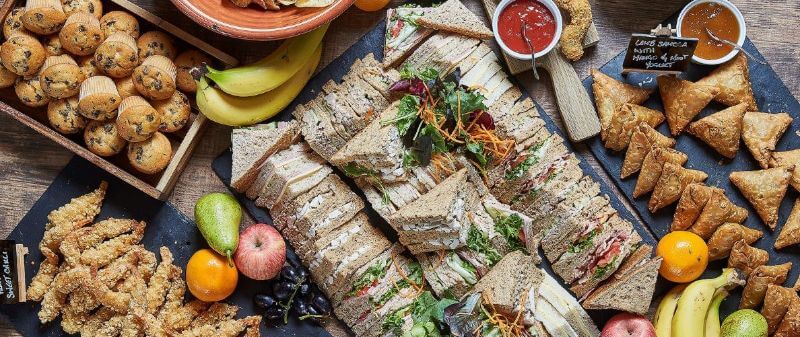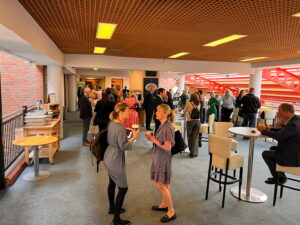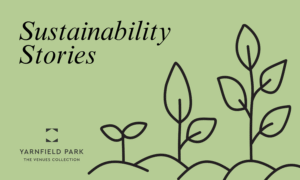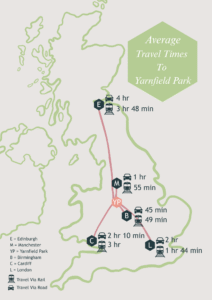
What sort of catering will you need for your meeting?
Making sure your attendees are provided with the refreshments they need – without going over budget or encouraging waste – can be stressful. At Yarnfield Park, our catering team are accustomed to providing delicious food for all our guests, whether that’s a coffee break for 10 or a banquet for 250. Below you’ll find a few of our top tips for planning food for your meeting.
How long is your meeting?
It’s well known that breaks and nourishment improve concentration and performance which is why business experts recommend a break every 1-2 hours. Breaks don’t need to be very long – simply standing up, walking across the room to grab a glass of water or a coffee can be enough. Planning a break at the 60-90 minute mark in a longer meeting can help shake new ideas loose, as well as giving attendees a chance to take a comfort break. For all day meetings, lunch is essential, and you may want to offer dinner if a large number of your attendees need to stay over in order to attend the meeting. A post-meeting dinner can be a good chance for attendees to socialize and discuss issues further.
Quick sandwich, buffet, sit-down meal or banquet?
You may know instinctively whether a more casual or more formal meal is appropriate for your meeting and different levels of formality may be appropriate at different times. For example, many multiple-day meetings close with a lavish dinner, celebrating the hard work accomplished. If you’re hesitating, consider the practical details: the more formal the meal, the longer it will take. Sandwich trays or a buffet can get your attendees back in their meeting within an hour, while a sit-down meal will typically be around 2 hours and a banquet can last up to 5, although this typically includes speeches, awards or entertainment.
Dealing with dietary requirements
A good catering team can handle most dietary requirements but they need sufficient notice. For this reason, it’s essential to let the venue know as soon as you can if any of your guests have special dietary requirements. It’s particularly important to indicate if there are severe allergy issues as the catering team will need to make sure there’s no risk of cross contamination. As an example, they may offer a special, plated meal to an allergy sufferer to ensure they’re not at risk of casual contamination at a buffet.
More choice or less choice?
As a general rule, having less choice is more affordable and simpler, particularly when dealing with large groups. If you want to offer your guests choice, then a buffet is an excellent option, as it lets each guest pick and choose from everything that’s available. However, a buffet can be problematic for guests with special dietary requirements, either due to casual cross contamination (someone has used the peanut butter spoon in the jam) or lack of real choice (if they are late to the table, there may be nothing they can eat left). At Yarnfield Park, our expert event catering team work hard to ensure that all our guests are fully satisfied by each meal and snack, so if you have any questions about planning food for your meeting, please don’t hesitate to get in touch.
Go back to other articles

